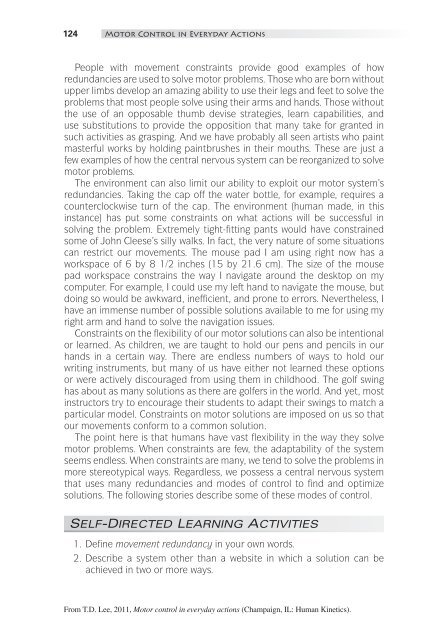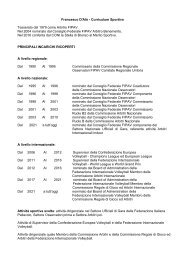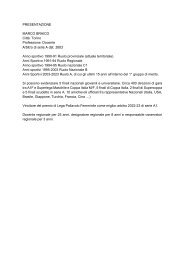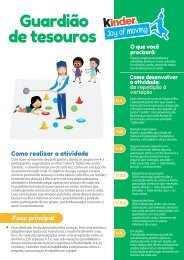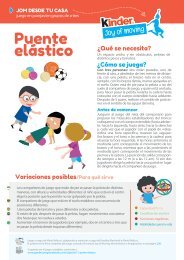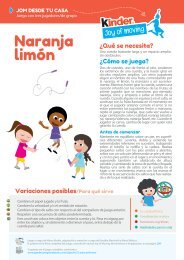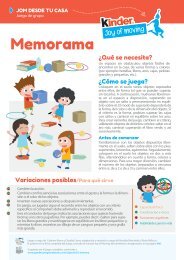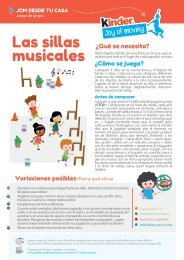Websites and Silly Walks
Create successful ePaper yourself
Turn your PDF publications into a flip-book with our unique Google optimized e-Paper software.
124 Motor Control in Everyday Actions<br />
People with movement constraints provide good examples of how<br />
redundancies are used to solve motor problems. Those who are born without<br />
upper limbs develop an amazing ability to use their legs <strong>and</strong> feet to solve the<br />
problems that most people solve using their arms <strong>and</strong> h<strong>and</strong>s. Those without<br />
the use of an opposable thumb devise strategies, learn capabilities, <strong>and</strong><br />
use substitutions to provide the opposition that many take for granted in<br />
such activities as grasping. And we have probably all seen artists who paint<br />
masterful works by holding paintbrushes in their mouths. These are just a<br />
few examples of how the central nervous system can be reorganized to solve<br />
motor problems.<br />
The environment can also limit our ability to exploit our motor system’s<br />
redundancies. Taking the cap off the water bottle, for example, requires a<br />
counterclockwise turn of the cap. The environment (human made, in this<br />
instance) has put some constraints on what actions will be successful in<br />
solving the problem. Extremely tight-fitting pants would have constrained<br />
some of John Cleese’s silly walks. In fact, the very nature of some situations<br />
can restrict our movements. The mouse pad I am using right now has a<br />
workspace of 6 by 8 1/2 inches (15 by 21.6 cm). The size of the mouse<br />
pad workspace constrains the way I navigate around the desktop on my<br />
computer. For example, I could use my left h<strong>and</strong> to navigate the mouse, but<br />
doing so would be awkward, inefficient, <strong>and</strong> prone to errors. Nevertheless, I<br />
have an immense number of possible solutions available to me for using my<br />
right arm <strong>and</strong> h<strong>and</strong> to solve the navigation issues.<br />
Constraints on the flexibility of our motor solutions can also be intentional<br />
or learned. As children, we are taught to hold our pens <strong>and</strong> pencils in our<br />
h<strong>and</strong>s in a certain way. There are endless numbers of ways to hold our<br />
writing instruments, but many of us have either not learned these options<br />
or were actively discouraged from using them in childhood. The golf swing<br />
has about as many solutions as there are golfers in the world. And yet, most<br />
instructors try to encourage their students to adapt their swings to match a<br />
particular model. Constraints on motor solutions are imposed on us so that<br />
our movements conform to a common solution.<br />
The point here is that humans have vast flexibility in the way they solve<br />
motor problems. When constraints are few, the adaptability of the system<br />
seems endless. When constraints are many, we tend to solve the problems in<br />
more stereotypical ways. Regardless, we possess a central nervous system<br />
that uses many redundancies <strong>and</strong> modes of control to find <strong>and</strong> optimize<br />
solutions. The following stories describe some of these modes of control.<br />
Self-Directed Learning Activities<br />
1. Define movement redundancy in your own words.<br />
2. Describe a system other than a website in which a solution can be<br />
achieved in two or more ways.<br />
From T.D. Lee, 2011, Motor control in everyday actions (Champaign, IL: Human Kinetics).


